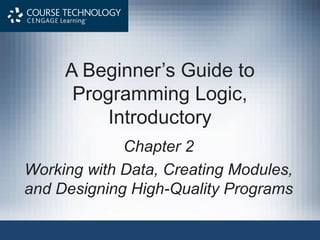This document serves as a beginner's guide to programming logic, focusing on key concepts such as declaring variables and constants, modularization, and designing high-quality programs. It covers important topics like data types, assignment statements, arithmetic operations, and the structure of mainline logic in programming. The text emphasizes the advantages of modularization for teamwork and reusability, while also providing guidelines for naming conventions and good programming practices.














































